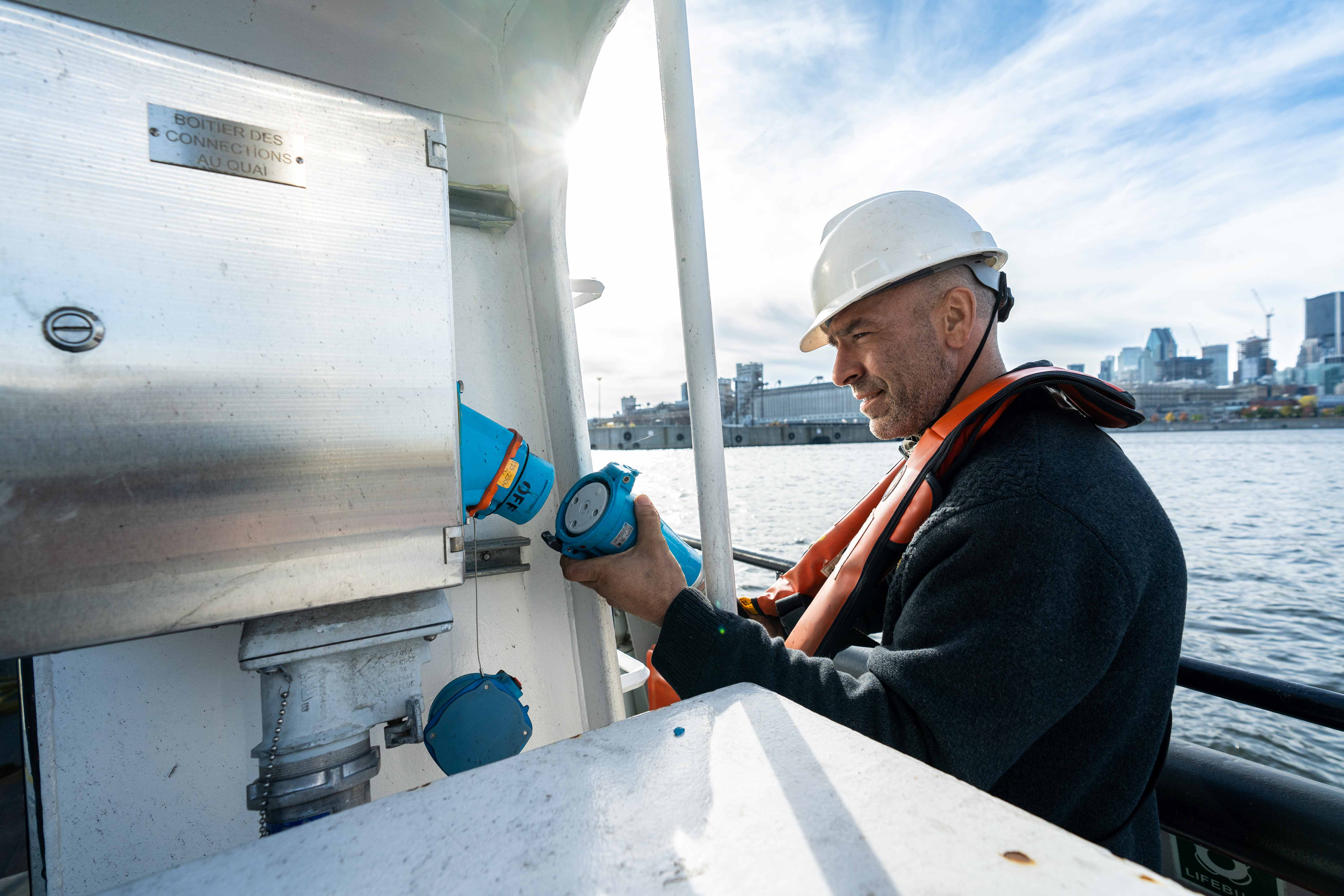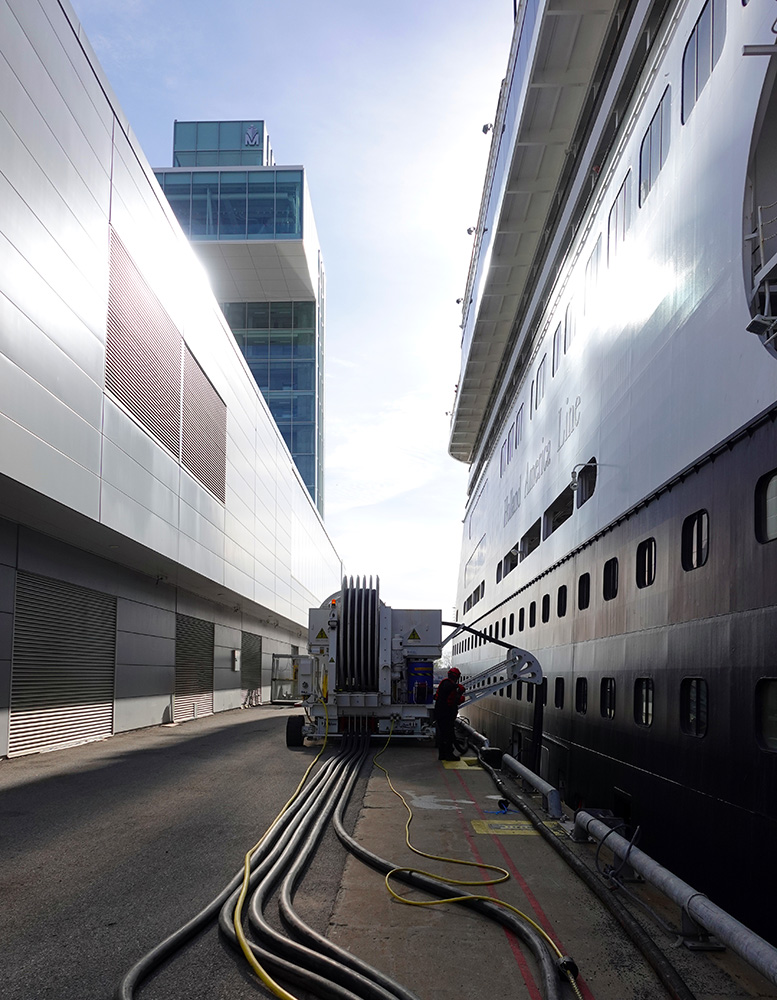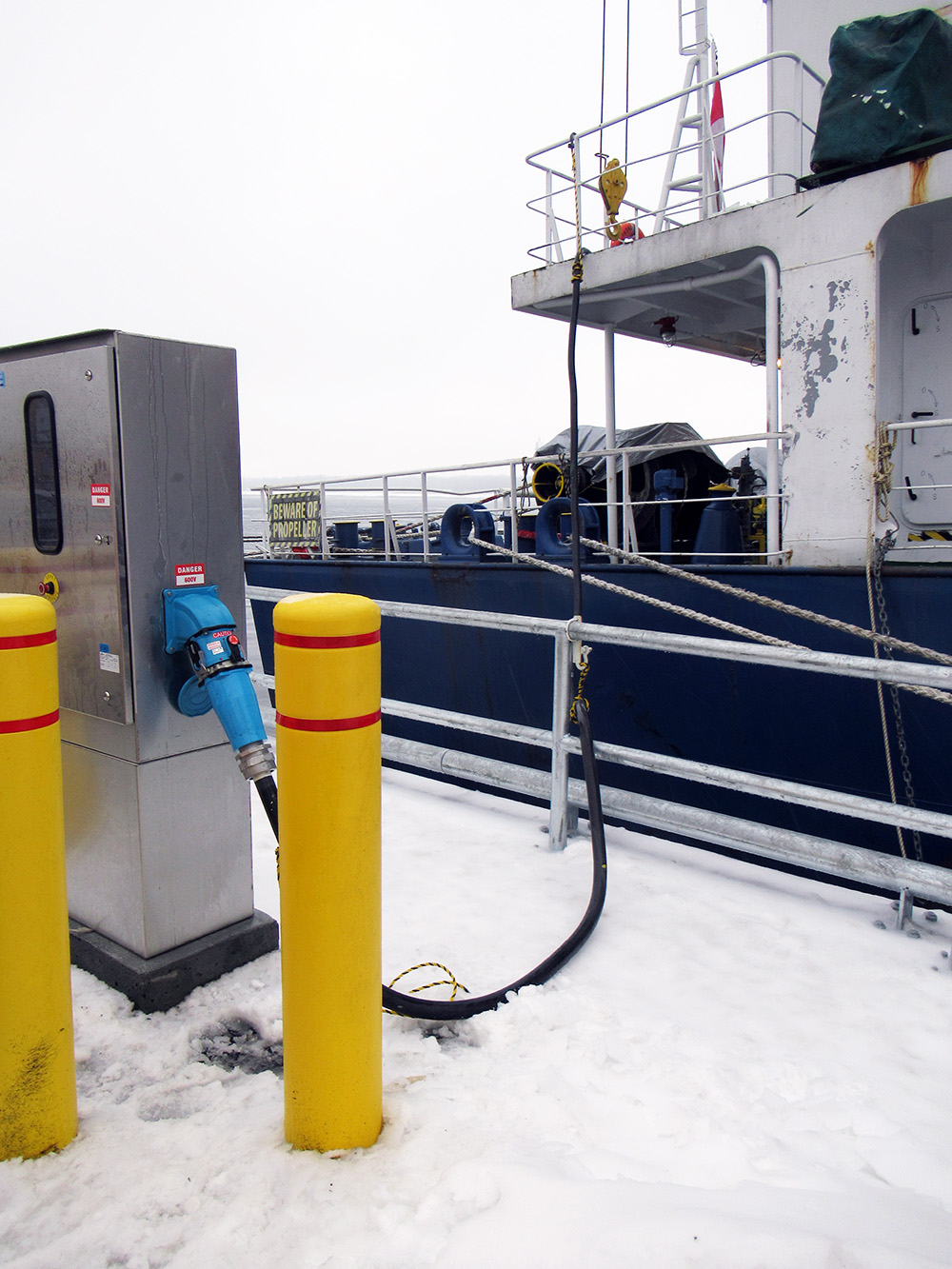
Electrifying the Port of Montreal: a commitment to a sustainable future
Gradually implemented for wintering ships and cruise ships calling at the Port of Montreal, the vessel power supply service is set to enter a growth phase.

This is because new European regulations require ports to connect berthed vessels to the power grid by 2030. With Europe accounting for more than 50% of the Port of Montreal’s international trade, the Port is determined to keep pace with this shift and extend shore power to all its terminals, including container terminals. “We have to prepare for the future now,” said Viorel Ciurezu, Senior Electrical Engineer at the Port of Montreal. “We have to be ready for the day when every vessel coming from Europe will be electrically powered.”
This objective is consistent with the Port of Montreal’s announced commitment to achieve carbon neutrality by 2050. By allowing visiting ships to connect to electricity during their stay in Montreal, this technology makes it possible for ships to put their engines on standby while docked, and still be able to access essential systems such as air conditioning, refrigeration and security. Shore power reduces the noise, vibrations, fumes and GHG emissions caused by diesel engines.
Overview

In all, there are 43 shore power connection systems installed throughout the Port of Montreal, saving close to 2000 tonnes of GHG emissions annually. Until recently, the system was mainly used by bulk carriers on the Seaway bound for the Great Lakes during the winter shutdown from December to March, but demand from cruise ships soared in 2023. “The cruise ship system was implemented in 2017 and underused for years. Now, there is a growing demand for this type of service and technology in the marine industry. During the last cruise season, we struggled to keep up with demand!” continued Viorel Ciurezu.
New projects
In January 2024, the Juno Marie became the first operational vessel to benefit from shore power. This vessel, which operates 365 days a year to provide fuel bunkering to ships calling at Montreal, can now remain connected to electricity when not in service. In February alone, the vessel consumed almost 38,000 kWh, representing an estimated saving of 40 tonnes of GHGs compared with the use of traditional fuels.

Shore power at the Port of Montreal
On another front, Bickerdike Terminal is the hub of an ambitious project to create the first green shipping corridor between the ports of Montreal and St. John’s. Converting Bickerdike Terminal to the use of electrical power will be a milestone in eliminating carbon emissions on one of Eastern Canada’s busiest shipping routes, carrying nearly 500,000 tonnes of cargo (containerized and non-containerized) per year, including food products.
Growing needs
Did you know that the Port of Montreal manages its own power grid? That’s why the growing demand for electricity is impacting the services and resources available at the terminals. The docks are adapting to meet these changes. For instance, an electrical substation specifically designed to supply power to cruise ships was installed on the Port of Montreal’s Grand Quay. A new electrical substation was also installed at Bickerdike Terminal during the latest renovations, doubling the terminal’s electrical capacity and clearing the way to implement shore power service.
